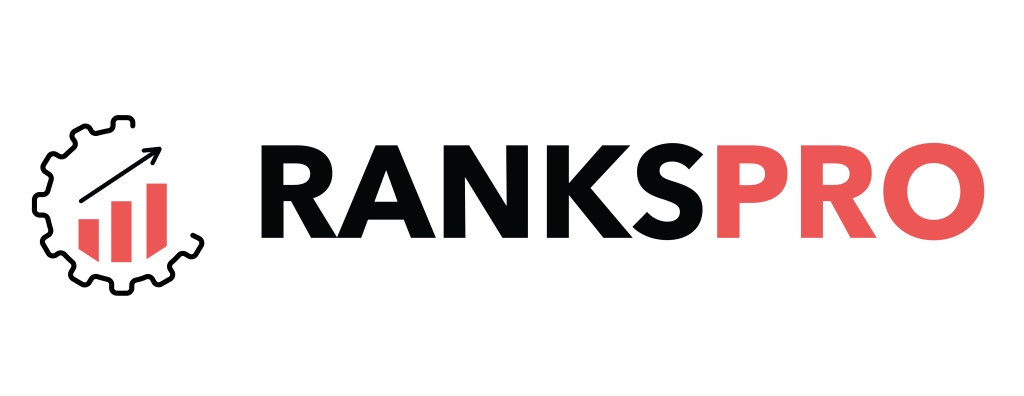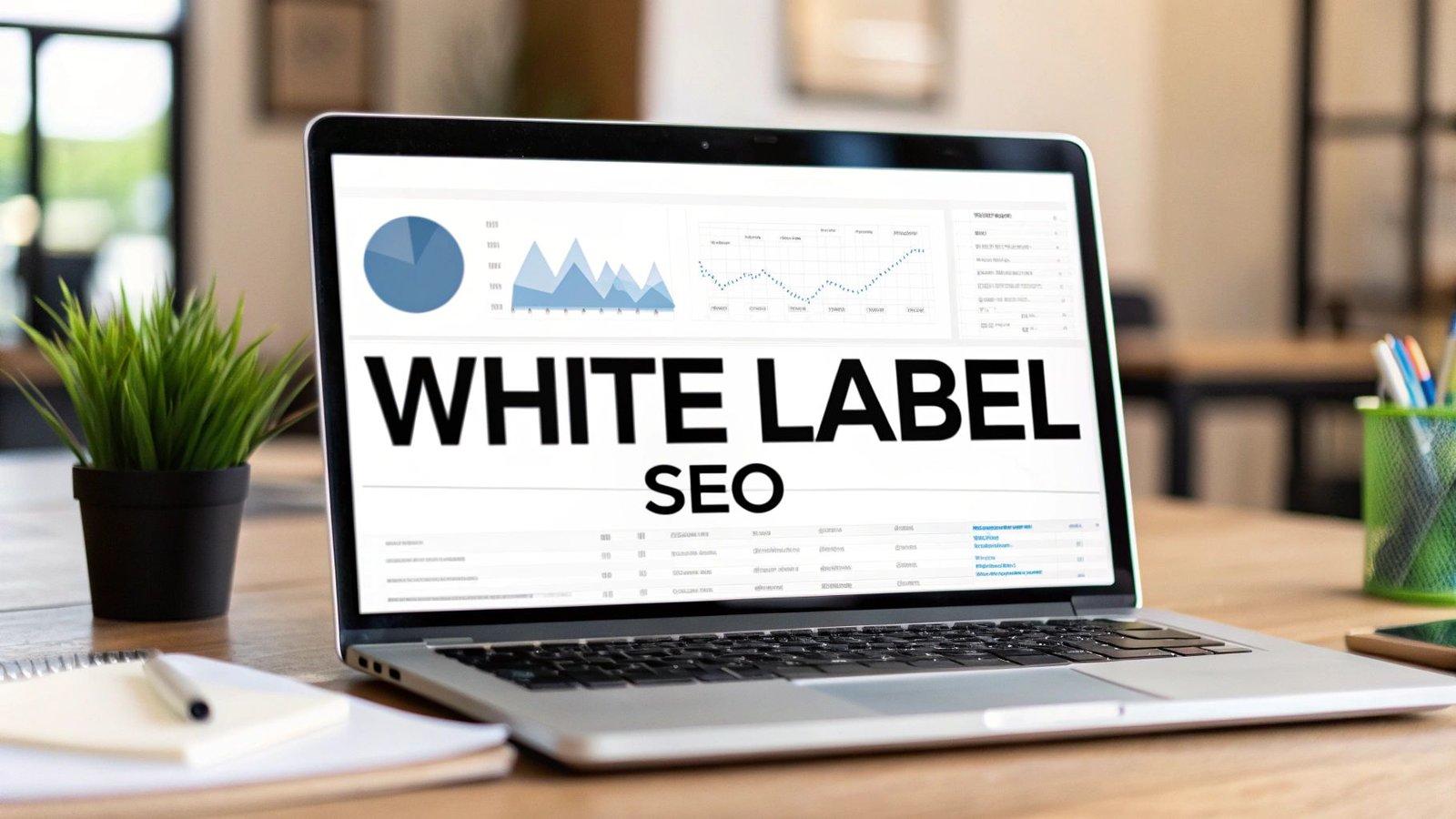The foundation of a successful SEO strategy lies in understanding your audience’s needs and tailoring your content to meet them. This is where search intent comes into play. Every query typed into a search engine carries a specific purpose, known as search intent.
Recognizing and addressing this intent allows businesses to create content that resonates with users, improves engagement, and drives conversions.
In this blog, we will explore the concept of search intent, its importance in SEO, the different types of search intent, and actionable ways to optimize your content for each type.
By the end, you’ll be equipped with the knowledge to align your SEO strategy with user expectations and enhance your online visibility.
What is Search Intent?
Search intent, also known as user intent, refers to the purpose behind a user’s search query. It answers the fundamental question: What is the user trying to achieve?
Search engines like Google have evolved to prioritize understanding search intent over merely matching keywords. This focus ensures that users receive the most relevant results for their queries.
For example:
- A query like “best laptops for students” indicates the user is researching options and comparing products.
- A query like “buy MacBook Air online” shows the user is ready to make a purchase.
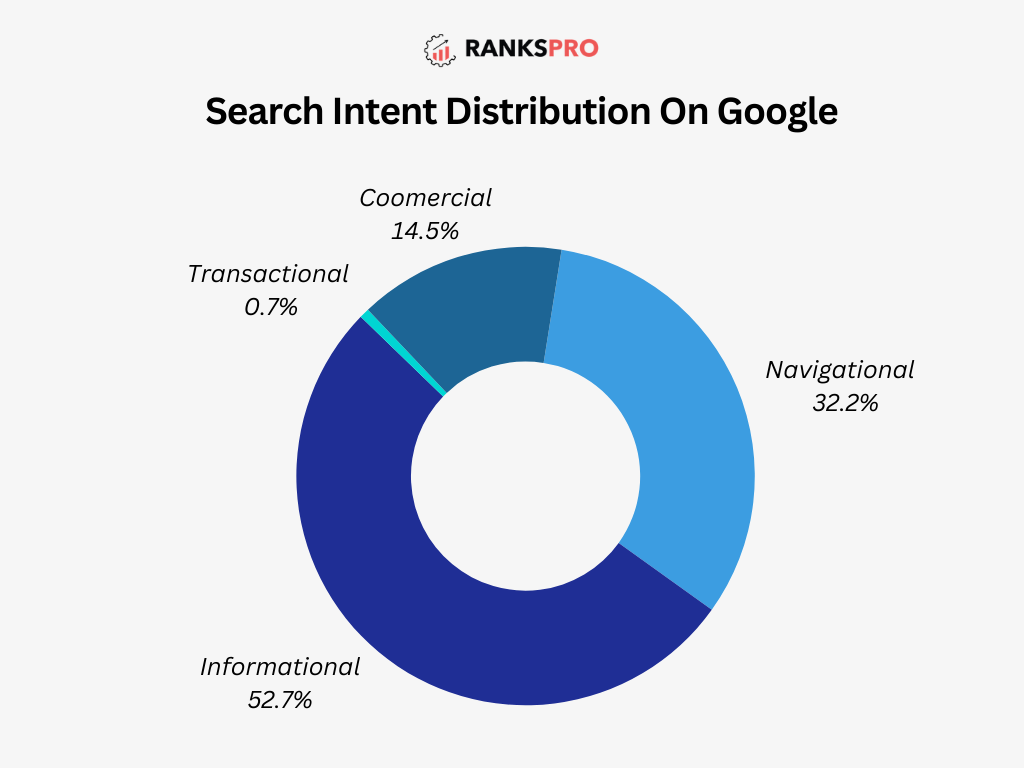
Understanding search intent helps marketers deliver the right content to the right audience at the right time, ensuring a seamless user experience and improved SERP performance.
Why Search Intent Matters for SEO?
Matching the content to a search intent forms the core foundation of modern-day SEO. The gap between users’ searches and what you actually have to deliver is bridged, making things seamless and beneficial.
Here are some that define the importance of search intent for SEO:
1. Improved Rankings
Content satisfaction of user intent is a priority for Google. In the study by Backlinko, it was found that the average click-through rate (CTR) of a page standing at #1 on Google consists of 27.6%, which often meets closely with the intent of the search query. If the intent of your content also meets their needs in a query, search engines consider it relevant and give more ranks for it.
2. Enhances Content Relevance
Content relevance is key to search visibility. According to SEMrush, 70% of marketers said knowing the intent of the users directly impacts their work on creating relevant content. The more aligned your content is with user needs, the higher the chances are that it will appear in search results, enhancing visibility and engagement.
3. Increases Engagement Metrics
Reduced bounce rate and the time spent on site from the user’s end while meeting the intent of the users. According to HubSpot, dwell time on a page heavily impacts SEO performance, and the greater the dwell time, the higher the SERP ranking.
Thus, catering to search intent satisfies the engagement criteria and indicates to search engines that the content is valid.
4. Boosts Conversion Rate
Content tailored to transactional or commercial intent can drive conversions. A Wordstream report shows that conversion rates for search ads are 4x higher when aligned with user intent compared to generic campaigns.
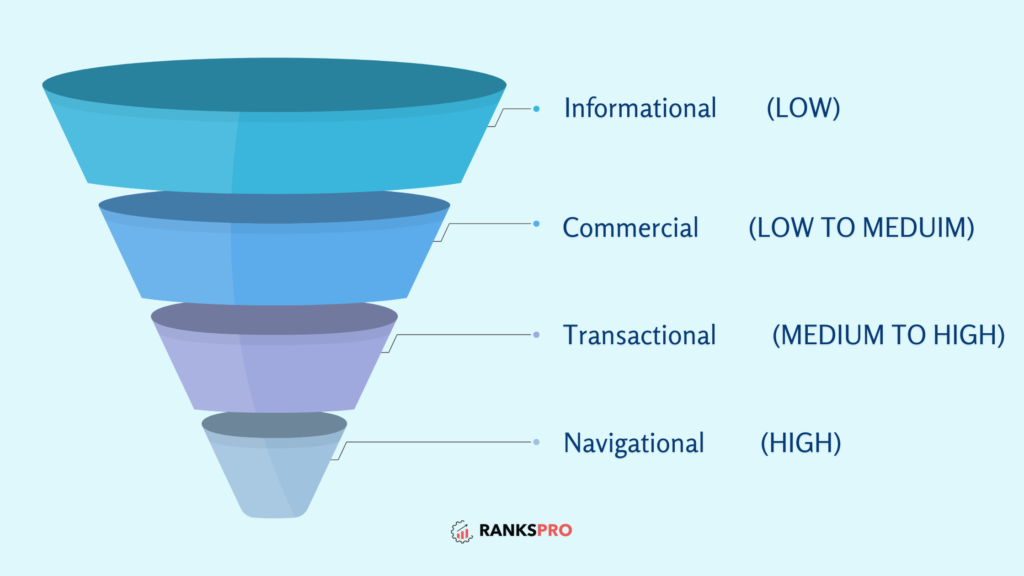
By knowing what drives your audience, you can create content that converts visitors into customers more effectively.
5. Adheres to Google’s Algorithms
Google constantly updates its algorithms to rank content that has value and answers search intent. According to research, 93% of online experiences start with a search engine, making it very important to ensure that the content is in line with what Google expects.
The BERT update, for instance, helped Google better understand natural language and context, thus meaning content that aligns with intent performs better.
6. Builds Authority
Providing the users with accurate and insightful information on their query makes your brand trusted. According to a survey done by Edelman Trust Barometer, 81% of consumers said they would need to trust a brand to purchase from it. Offering intent-specific quality content creates trust and authority for your business within the industry.
7. Richer User Experience
By knowing what people need and fulfilling these needs, you create a much smoother, more satisfying journey for your audience. Think with Google clearly shows that 53% of users will leave a site if it takes more than 3 seconds to load. Content that’s intent-focused paired with optimized site performance can go a long way in increasing user satisfaction.
Types of Search Intent
The more one understands search intent and its types, the better their chances of writing content that targets and appeals to the targeted audience while doing well in the rankings.
Below is an explanation of each of these types with supporting statistics and examples of what impact they create:
1. Navigational Search Intent
Users with navigational intent intend to arrive at a specific website or page. These users already know what they are looking for and frequently include brand names or product-related terms in their queries.
These examples will give you a better idea:
- “Facebook login”
- “Netflix homepage”
- “Nike official website”
Navigational searches make up a large share of branded traffic. A BrightEdge study shows that 68% of all online experiences start with a search engine, and a significant share of these are navigational queries.
Making sure your site ranks for branded searches is crucial to keeping your audience and maintaining brand visibility.
2. Transactional Search Intent
Transactional intent is focused on taking an action or deciding on a particular goal (buy or subscribe). When users search for particular queries, usually when they are looking for a specific service or product their search intent becomes transactional.
For example:
- “Buy iPhone 15”
- “Sign up for Netflix”
- “Download Canva app”
Transactional searches have high commercial values for business owners. According to Wordstream, conversions achieved through targeted transactional searches surpass 10%. This type of search intent has better conversion rates as compared to other intents because here the goals are generally focused on ready-to-engaged or buying high-intent customers.
3. Informational Search Intent
Informational intent users are looking to learn or discover the answer to a specific question. These are research-based queries and are typically at the very top of the sales funnel.
Use these examples with information intent:
- “How to bake a cake”
- “What is search intent?”
- “Why is SEO important?”
Informational search dominates the face of search. According to a report by Ahrefs, 92% of keywords received less than 10 monthly searches; this means that most queries tend to be quite specific and, therefore, more informational. Capturing this traffic helps build brand awareness and trust.
4. Commercial Search Intent
Users with commercial research intent are exploring and comparing possibilities before deciding. They are usually in the evaluation stage of the buyer’s journey.
Here are some examples:
- “Best smartphones 2025”
- “SEO tools comparison”
- “Top gaming laptops”
These are evaluating their options and will probably convert with the right information. Think with Google’s research showed that 59% of shoppers always do research before a purchase, highlighting the need to focus on intent.
How to Implement Navigational Search Intent?
Navigational search intent is defined as users searching for a specific website, page, or resource. Implementing solutions to deal with this intent means that your site will remain accessible, user-friendly, and easily found in the SERPs.
Here’s how to best service navigational intent:
1. Streamline Site Navigation
Develop an easy-to-follow structure that allows visitors to quickly locate what they’re seeking, whether it’s “Contact Us,” “About,” or “Login.” According to research conducted by GoodFirms, 61.5 percent of visitors abandon the website in case navigation is pathetic.
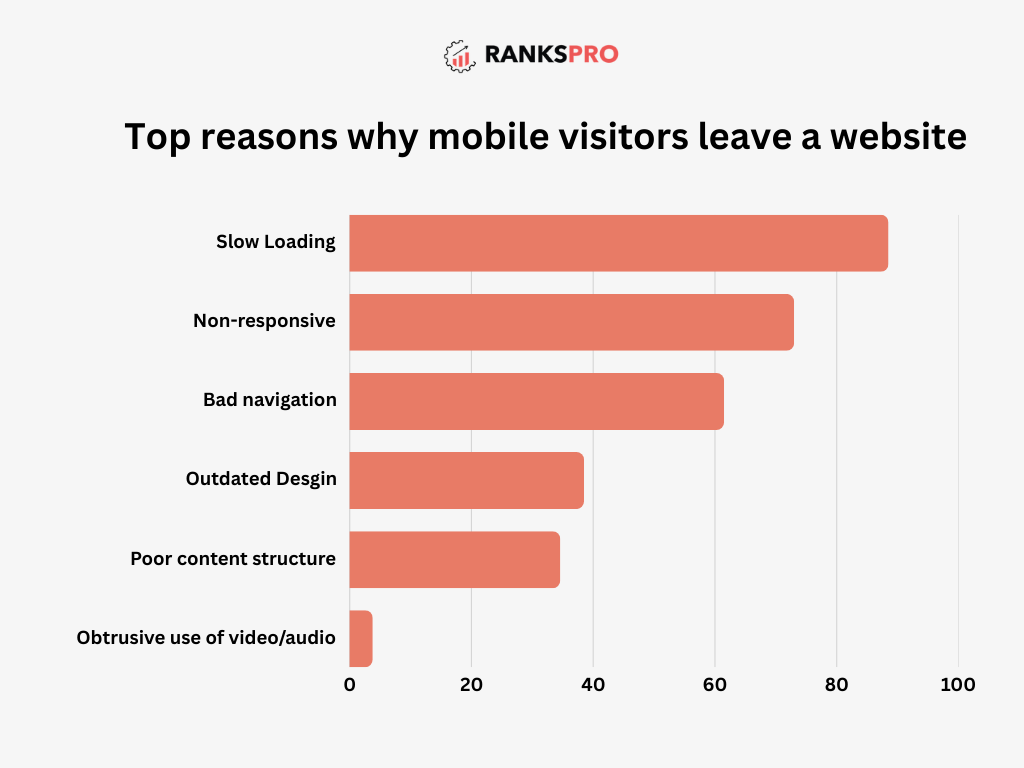
Here are some tips to improve site navigation to benefit navigational search intent:
- Utilize menus and breadcrumbs for the effective navigation of website visitors.
- Showcase the pages that are commonly searched on the homepage or highlight them on the footer.
- Clearly segment the website pages into proper categories to help users find content easily.
2. Leverage Site Links
Site links are extra links that appear below your website’s primary search result, which give access to the key pages directly. According to SEMrush, well-structured links help sites get a higher click-through rate because it is easier for users to find the information they need.
Here are certain ways to utilize site links beneficially:
- Help users and search engines understand your website hierarchy by implementing schema markup or structured data.
- Try to keep navigation consistent and logical using viable anchor texts.
- Focus on the most important web pages while updating your XML sitemap.
3. Enhance SERP Presence
Your homepage or key pages should be dominating the search results for branded queries. Not only does this enhance visibility but also helps reinforce the authority of your brand.
BrightEdge study has shown that more than 70% of branded searches are clicking on the top-ranking page, which further emphasizes the need to secure the SERP presence of your brand.
Here are some useful tips to achieve it:
- Make sure to mention your brand or business name in titles and descriptions
- Keep your brand ethics consistent across all digital platforms (search, social media, emails, etc.)
- Keep analyzing your SERP performance through Google Search Console for branded queries.
4. Optimize for Branded Keywords
Branded keywords are essential so that your website is shown when users search for your company or products. HubSpot states that branded keywords typically have higher conversion rates because, in most cases, the person searching for these keywords already knows your brand.
Here are the tips to do it:
- Use your brand name smartly in headers, meta descriptions, and alt text.
- Make sure your brand name appears organically in blog posts, press releases, and landing pages.
- Run PPC campaigns on branded keywords to own both paid and organic search results.
5. Improve site speed
Fast-loading pages are crucial to keeping users who come to your site through navigational searches. Google reports that 53% of mobile users leave a site that takes more than 3 seconds to load, and site speed is a direct ranking factor.
To make sure that your website and pages load quickly, do the following:
- Make sure to compress all the images and use them in modern formats like WebP.
- Make us of a reliable content delivery network (CDN), and enable browser caching.
- Use Google PageSpeed Insights for website audits and find key areas of optimization.
How to Implement Transactional Search Intent?
Transactional search intent is when a user is actually ready to act, such as buying a product, subscribing to a service, or signing up for a free trial. What you need, therefore, to serve this intent well is tactics that will flow users through easily to conversion.
Here are a few action items:
1. Use persuasive CTAs
Persuasive CTAs are considered a call for action that encourages users to execute their intended task. A catchy CTA gains attention and evokes an act at once from the user’s side.
Here are some of the best examples of the CTAs.
- “Buy Now”
- “Sign Up Today”
- “Get Started”
Implement these useful practices to utilize CTAs and make the search intent transactional:
- Use plain and simple text with a word of urgency or benefits.
- Prominently use CTAs in product pages, banners, and pop-ups.
- Apply contrasting colors to make the CTAs stand apart with bold buttons.
2. Create categorized landing pages
Transactional intent calls for dedicated landing pages optimized to the nth degree for conversion. The experience has to be clear, concise, and compelling.
The core of a great-performing landing page includes the following elements:
- Create precise content: Make the content relevant and value-driven.
- Include quality visuals: Including images in your landing pages can keep users hooked to your content.
- Use trust signals: Incorporate testimonials, customer reviews, and ratings to gain the trust of your target audiences.
- All-inclusive details: Make sure you mention all the relevant details such as pricing, benefits, contact details, etc.
Landing pages should be responsive and well-optimized to load quickly. This way you can meet the transactional intent of the content.
3. Use schema markup
Schema markup helps to add more information that Google can use to showcase through its features, like rich snippets. Make sure to provide all the crucial and relevant information that can entice your audience to transact.
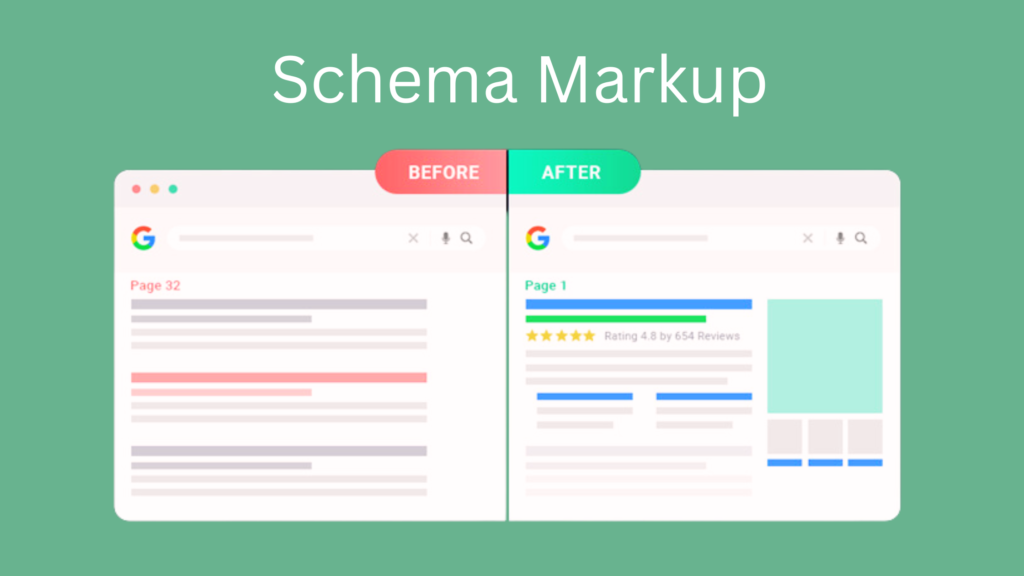
Here are the types of schema you should implement:
- Product Markup: Use product details such as price, availability, and specification.
- Review Markup: Show customer ratings and reviews within the search result.
- Offer Markup: Offer deals, discounts, and special offers.
Having structured data can bring opportunities to enhance click-through rates (CTRs) by helping users access your information. This can fulfill their transactional search intent, also making Google showcase your website or pages in snippets.
4. Optimize the checkout processes
Users expect fluent transactions whenever they intend to buy a product or subscribe to a service. Make sure that landing pages have a seamless checkout process to avoid abandon rates and maintain a quality user experience.
Here are the key improvement strategies you should use:
- Simplify checkout forms: Try to implement forms that ask only relevant information from your customers.
- Offer secure payment platforms: Make sure to integrate multiple payment gateways that offer complete transaction security.
- Allow guest transactions: To help new users quickly checkout, provide them guest access to allow them to buy your service or provide it fluently.
- Mobile optimization: Make sure landing pages and the website load quickly on all devices including mobiles and tablets.
The checkout process on the websites should be secured with the relevant SSL certificates to gain customers’ trust. These signals contribute to transactional intent.
5. Leverage PPC ads and keyword integration
PPC ads are a perfect tool to implement keywords that have transactional intent. They quickly attract the targeted audiences to help them make quick decisions and increase conversions.
Here are certain strategies to implement transactional keywords in PPC ad campaigns:
- Implement keywords in CTAs: Use transactional keywords in the CTAs to create a higher impact.
- Utilize ad elements: There are multiple ad extensions that can bring quick leads. These extensions are generally call buttons, social media links, offers, or promotional banners.
- Target multiple locations: To maximize the impact of PPC ads use geo-targeting to run your campaigns on several locations.
Make sure to analyze the performance of your PPC ad campaigns consistently by tracking metrics like CTR and conversions. Find areas of optimization and keep the search intent transactions for more profitable outcomes.
How to Implement Informational Search Intent?
Users might not be ready to buy but want to explore topics, learn, and conduct research. You can establish your authority and even create trust if you respond well to their queries.
Here’s how to optimize for informational search intent:
1. Create value-driven content
The heart of content catering to information search intent lies in providing informative, in-depth content. That is, what the user would like to look for is really detailed, useful, and very well-researched answers.
Here are the types of content you should create:
- Create long-form blog posts that provide detailed information on particular topics.
- Utilize information to implement step-by-step guides, how-to articles, and tutorials
- Publish insight-driven e-books and whitepapers to offer your target audience value out of our content.
- Include relevant FAQs in your niche to answer their queries and other relatable questions.
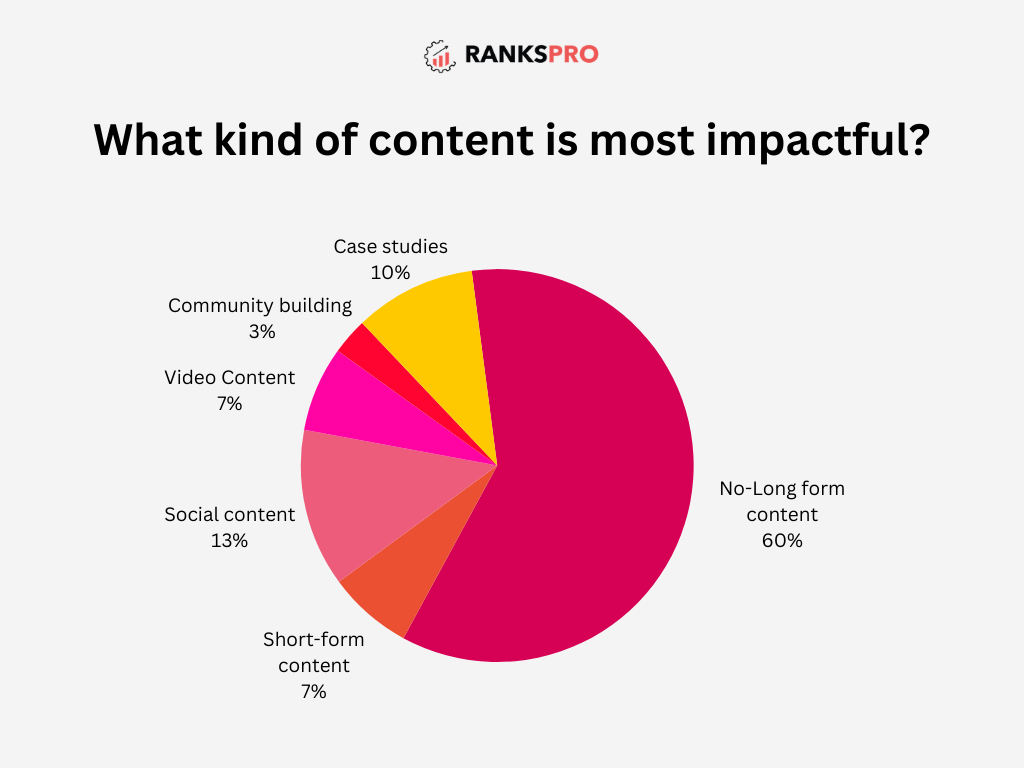
For example, if the search is for “how to start a blog,” you could provide an elaborate guide detailing the tools, steps, and tips for launching a successful blog.
2. Focus on readability
Content’s relevancy and readability are the core factors that keep your targeted audiences hooked on your landing pages. While implementing the information intent in your content make sure to maintain its readability consistently.
Here are some useful tips to implement informational search intent in your content:
- Structure content: Avoid long paragraphs or sentences while keeping the content well-structured using headings, sub-headings, and bullet points.
- Don’t overdo language: Try to explain things in simple words and avoid using complex or unnecessary jargon.
- Include visuals and stats: Value-driven content always attracts users and keeps them hooked with your content. Include statistical images and infographics to explain concepts.
3. Leverage long-tail keywords
Long-tail keywords are perfect for implementing informational intent in your content. These phrases help users to get the most relevant and quality answers according to their search queries.
These keywords are important because:
- They tend to have less competition, which increases the chances of ranking.
- They give insight into user intent, and you can craft highly targeted content.
Here is an example of utilizing long-tail keywords for informational intent:
Target “SEO” with phrases such as “how to optimize SEO for small businesses” or “best SEO practices for 2025.
Find relevant informational keywords using keyword research tools and place them naturally into your content.
4. Focus on SEO Basics
While implementing informational search intent, make sure to take care of other important SEO factors. This will help in better rankings and targeted organic traffic for your content.
Consider the following strategies to implement SEO basics:
- Include keywords in meta tags: Meta titles and descriptions should be clear about what the content is.
- Structure headings appropriately: Headers such as H1, H2, and H3 should be optimized to guide both users and search engines through the structure of your content.
- Image optimization: Images should have alt text to enhance accessibility and visibility in search results.
For example, if the topic is “benefits of meditation,” a meta title like “Top Benefits of Meditation for Mental Health and Productivity” could attract users looking for in-depth insights.
How to Implement Commercial Search Intent?
Having a commercial search intent in your content always helps users to help them make the right decision. You need to include detailed and authentic information that can guide them in their buyer’s journey.
Here are the ways to implement commercial search intent:
1. Publish comparison content
Comparison content assists a user in the evaluation of options to decide which one fits best. It is further classified into two categories:
- Comparing products or services side-by-side, including features, benefits, and price.
- Comparison tables or charts for rapid, easy visual comparison.
- Detailed comparison guides breaking down differences, use cases, and recommendations.
A good example will be developing content like “iPhone 15 vs. Samsung Galaxy S25: Which One to Buy?” to target users who are searching for a comparison of two competing products.
2. Write in-depth reviews
Reviews give a rich source of information on the pros, cons, and performance of a product or service.
What to include in reviews:
- True and unbiased evaluations of the issues and preferences of users.
- Features, advantages and disadvantages, and real-life applications.
- Keywords such as “best,” “top,” “vs,” and “comparison” for search queries.
For instance, creating blog posts like “Top 5 SEO Tools Compared: Features, Pricing, and Recommendations” is necessary to serve a user looking to find the right tool for a specific need.
3. Use affiliate links
Affiliate links are a method of monetizing your content, while also helping users find the products or services you recommend.
Here are some methods to use affiliate links:
- Products or services recommended should meet the needs and expectations of the user.
- Disclose your affiliate relationship with the user to establish transparency and trust.
- Use affiliate links organically in comparison content, reviews, or buying guides.
Example: Use phrases like “Check current pricing on Amazon” or “See more details on the official website with affiliate links”.
4. Focus on decision-making content
Decision-making content is the final push the audience needs to make an informed choice.
To include in decision-making content:
- Pros and cons: Present clear advantages and disadvantages of products or services.
- Customer testimonials: Real reviews or case studies convey credibility.
- Product demonstrations: Videos, images, and detailed descriptions of how the product works.
- Case studies: Data-driven insight on how the product solved problems for others.
Make content such as “How This Productivity App Increased My Team’s Efficiency by 50%” to impact purchasing decisions for customers with stories of real success.
Use RanksPro for Keyword Research with Search Intent
RanksPro provides a keyword research tool that can help in creating keyword strategies for your business. You can easily search for the relevant terms that you want to use in your SEO campaigns and craft the website as well as promotional content according to them.
Moreover, RanksPro’s keyword research tool also tells the search intent of the keywords along with other metrics like keyword difficulty, search volume, and cost per click (CPC).

Here, you can see a separate column of ‘intent’, where N denotes navigational intent, C denotes commercial intent, I denotes informational intent, and T denotes transactional intent.
You can also select relevant keywords by clicking checkboxes on the left and adding them to your keyword list.
Try RanksPro today to discover keywords with the right type of search intent and strengthen your keyword strategy for better rankings and targeted traffic.
